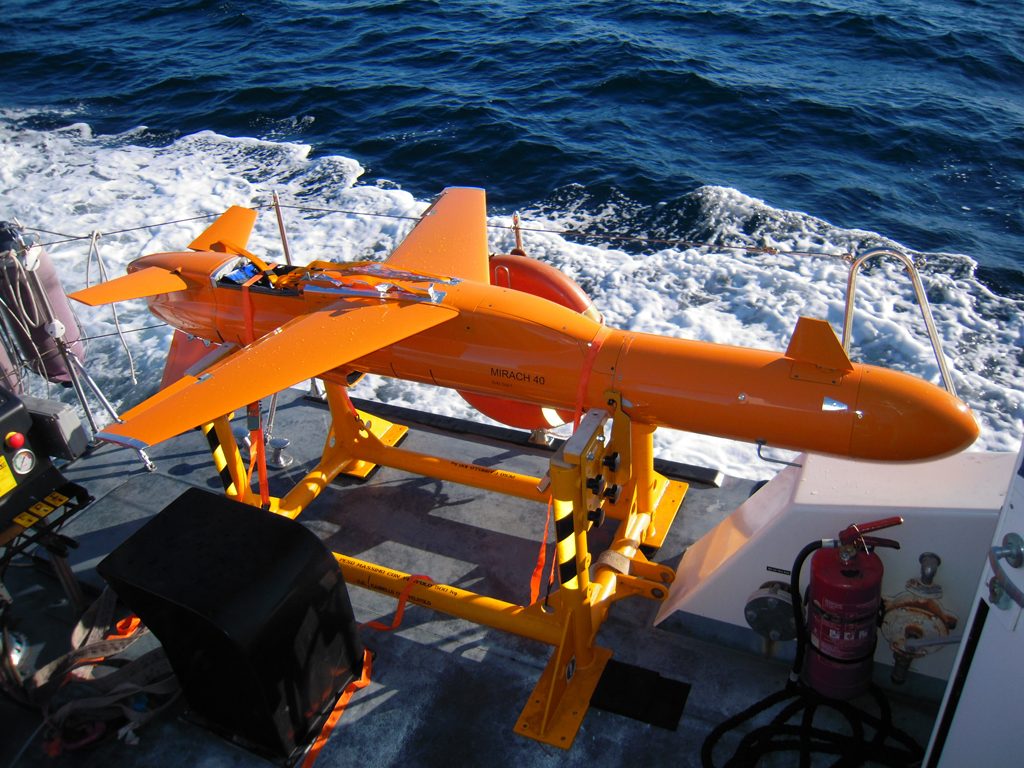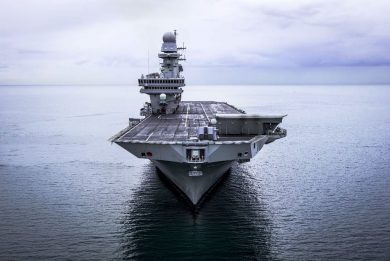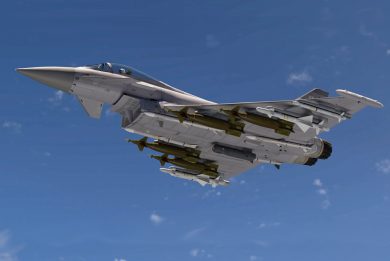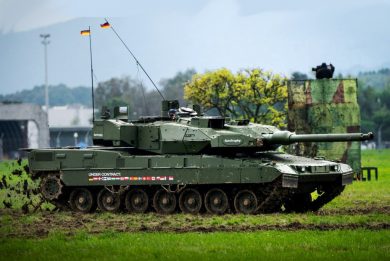
NAVDEX 2019: Italian Navy trains with Leonardo’s M-40 target drone
Leonardo’s new M-40 target drone flew its first live missions for the Italian Navy in a recent training exercise at an Italian joint armed force test range, unveiled the company during IDEX/NAVDEX 2019.
The Mirach 40 (M-40) is the latest addition to the Leonardo’s family of Mirach reusable multi-threat aerial target systems. The M-40 is supplementing the training operations provided by the same Leonardo’s Mirach family and more capable Mirach 100/5 model to Italian Armed Forces since the late 80’s at the PISQ (Poligono Interforze Salto di Quirra) joint armed forces test range in Sardinia, under a 3-year target drone service contract assigned to the Italian group by the NATO Support and Procurement Agency (NSPA), commended in January 2018.
« The Navy personnel were able to ‘shoot down’ the reusable M-40 in realistic scenarios »
Under this operational service, the M-40 was involved in the second-half of 2018 in a main naval and air exercise in the Tyrrhenian Sea which saw the Italian Navy’s Cavour aircraft carrier and its complement of AV-8B+ STOVL aircraft training alongside the missile-guided destroyer Mimbelli against the same aerial target simulating a range of incoming threats. According to Leonardo, ‘the M-40 system played the part of a missile to simulate an attack against the Italian naval vessels and separately acted as a hostile enemy fighter in air-to-air combat scenarios. During these missions, the Navy personnel were able to ‘shoot down’ the reusable M-40 in realistic scenarios, allowing them to train with weapon systems including Aspide missiles. During the Italian Navy exercise, the Mirach 100/5 was also employed to simulate a missile attack against the naval vessels, allowing the crew to train with Standard SM-1 and Aster 15 missiles.
« The M-40 has a maximum take-off weight of 70 kg »
The M-40 has been design, according to Leonardo, to provide medium-to-high performance at a cost comparable with competitors’ entry-level drones, while being capable to simulate most of the present-day threats in terms of kinematics and signatures, including a variety of aircraft and missile, radar, infrared (IR) and visual threats. With a 2.5 meters length and a 1.5 meters wingspan, the M-40 has a maximum take-off weight of 70 kg of which 15 kg dedicated to the wide and flexible range of mission payload, installed inside the fuselage and under the wings. These allow the system to simulate a range of threats including very-low altitude sea skimming missions, formation flights and 3D ‘g-controlled’ maneuvers within a flight envelop between 5 and over 8,000 meters, more than 60 minutes endurance, a presentation speed up and over 200 m/s and a maximum 6G load factor. The payload configurations include active and passive RCS, IR augmenters, smoke generators, IR and chaff dispenser and MDI radar. Designed as ITAR-free and capable to be operated from both land and ships thanks to its reduced footprint, the M-40 is launched via a pneumatic catapult, which provides benefits in terms of mission reliability and safety/environmental/logistics footprint for the lack of pyro boosters. The system can be operated by the same Mirach common ground control station already deployed with the Mirach 100/5 allowing simultaneous use of systems. Capable to be recovered on ground or sea, the turnaround time is respectively less than one hour and three hours.
Photo courtesy Leonardo



